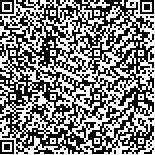Archive > Volume 40 Issue 7 > 2014,40(7):796-805. DOI:10.7519/j.issn.1000-0526.2014.07.003 Prev Next
Application of a Verification Method on Bias Analysis of Quantitative Precipitation Forecasts
- Article
- Figures
- Metrics
- Preview PDF
- Reference
- Related
- Cited by
- Materials
Abstract:
Object oriented verification method, which analyzes the bias of location, rain volume for a rainfall event, is one of the techniques for quantitative precipitation forecast verification.Based on the object oriented verification method and weather system auto identification techenique, the errors of the quantitative precipitation forecast and synoptic scale system of high resolution version of the ECMWF medium range forecast model for 1-10 d of 5 typical severe rainfall cases over Southwest China in 2012 was determined. The results show that: The forecasted rainfall zone for all valid time is located west and north to the observed one, especially for the medium range forecast. 70% points of the forecast rainfall belt over the rainfall axis lie in two degrees north and three degrees west of observed one. The forecasted rainfall intensity with amount larger than 25 mm/24 h is weaker than the observed. The distribution of forecasted extreme rainfall is almost the same as the observed in 24-48 h. However, with the valid time becoming longer, the extreme forecasted rainfall gets obviously weaker. Area of forecasted light rain is larger than the observed, but the area of rainfall more than 25 mm/24 h is smaller. For Sichuan Basin, the forecasted shear line is situated 0.5-3 degrees west to the analyzed one, and the forecasted low level jet (LLJ) is located 0.5-1.5 degree west. The intensity error of LLJ is different for different seasons.
Keywords:
Project Supported:
Clc Number:


Mobile website









